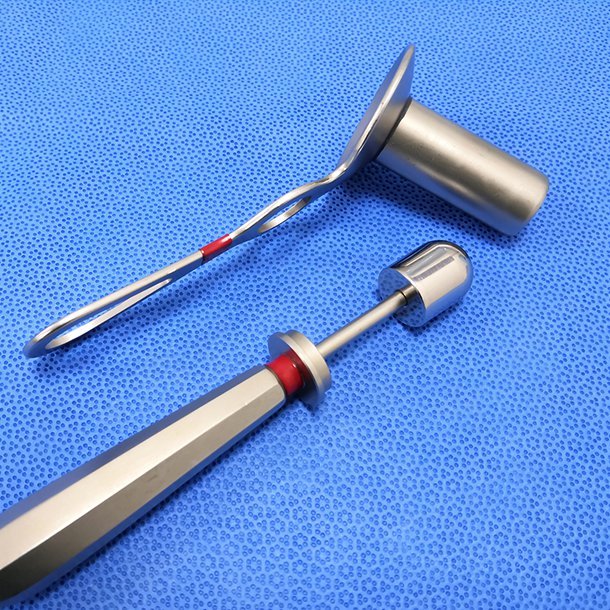What Is Flexible Sigmoidoscopy?

Flexible sigmoidoscopy is a procedure that allows your doctor to examine the rectum and the lower (sigmoid) colon. The flexible sigmoidoscope is a flexible tube 60 cm long and about the thickness of your little finger. It is inserted gently into the anus and advanced slowly into the rectum and the lower colon.
It is an accurate and simple method of investigating the cause of rectal bleeding, change in bowel habits, and rectal symptoms such as pain and diarrhea. Flexible sigmoidoscopy also is a part of colon screening and surveillance for colon cancer.
How do I prepare for flexible sigmoidoscopy?
In order to obtain accurate results, the rectum and the lower colon must be completely clean of stool. Your doctor will give you detailed instructions on how to cleanse your colon.
In general, this requires the use of one or two enemas prior to the procedure and may also call for a laxative and some dietary modifications. Under special circumstances, such as the presence of significant diarrhea, the preparation may be waived.
Do I continue my medications for flexible sigmoidoscopy?
- In general, you can continue to take your regular medicines. You should, however, inform your doctor of all the prescription and non-prescription medications you are taking as well as any allergies you may have.
- Certain drugs increase the risk of bleeding if biopsies are performed; these include aspirin, blood thinners such as warfarin (Coumadin), and NSAIDs such as Motrin and Advil. Your doctor may ask you to stop these medications for several days before the procedure.
- You should also alert your doctor if you have an artificial heart valve, hip or knee prosthesis, or have a disease of the heart valves such as mitral stenosis, aortic stenosis, or mitral regurgitation. Patients with these conditions may need antibiotics prior to colonoscopy, or dental procedures to prevent infection of the heart valves or the prosthesis.
What can I expect during flexible sigmoidoscopy?
- Flexible sigmoidoscopy is generally well tolerated and rarely causes any significant pain. There may be a sensation of fullness, bloating, pressure, or cramping during the procedure.
- In most instances, you will be lying on your left side while the instrument is advanced through the rectum and the colon under direct vision on a TV monitor.
- As the instrument is withdrawn, a careful examination is made of the lining of the colon. The procedure usually takes only 5 to 15 minutes.
What if something abnormal is found during flexible sigmoidoscopy?
- If the doctor finds an area in the colon that needs further evaluation, a biopsy (small sample of tissue) can be obtained and sent to the pathology department for examination under a microscope. If a polyp is found, the doctor may remove the polyp at the same time.
- Polyps are small growths on the inner lining of the colon and the rectum. Most polyps are benign (not cancerous), but some polyps are precancerous. Patients with precancerous polyps are usually asked to return for a colonoscopy after a more vigorous colon cleansing.
- Colonoscopy is a longer version of flexible sigmoidoscopy where the doctor examines the entire length of the colon. For more, please read the Colonoscopy article.
- The advantage of colonoscopy over flexible sigmoidoscopy is the ability to find and remove polyps in the parts of colon that are beyond the reach of the flexible sigmoidoscope. Removal of all of the precancerous polyps during colonoscopy has been shown to prevent colon cancer.
What happens after the flexible sigmoidoscopy?
After the procedure, the examiner will explain the findings to you. You may have some residual cramping or bloating because of the air that was instilled into your colon during the procedure. This should quickly disappear with the passage of gas or flatus. It can be expedited by walking about in the room. Under most circumstances, you should be able to resume your regular activities upon leaving the doctor's office or the hospital.
What are the complications of flexible sigmoidoscopy?
Flexible sigmoidoscopy and biopsy are generally safe when the procedure is performed by properly trained individuals. Possible but rare complications include a perforation (making a hole in the wall of the colon) and bleeding from the biopsy site. The former may call for surgery.
Although complications following flexible sigmoidoscopy are rare, it is important to recognize the early signs of any possible complication. Contact your physician or the examiner if you notice any of the following:
- severe abdominal pain,
- fever and/or chills, and
- rectal bleeding of more than a few teaspoons.
Conclusions
If you still have any questions about the procedure, reasons for doing it, alternative tests, costs, and insurance coverage, do not hesitate to speak to your doctor or the staff. Most endoscopists are highly trained specialists and welcome your questions regarding the procedure, and their medical credentials and training.

